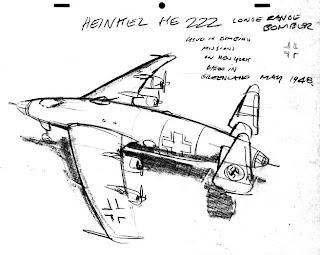.jpg)
The SG-6 Shinkou Boke or "Rising Fool", was to be Japan's singular attempt at a v.t.o.l. aircraft.
However, due to increasing wartime restrictions, the Shiguri company was forced to use inferior materials on this project.
Namely, the liberal use of bamboo on most structures, a treacherous material at best. That, perhaps lead to the prototype's very demise. Yet, the Shinkou Boke had Some rather interesting features. To begin with,
it was armed with one 75mm cannon (whose breech almost filled the cockpit) and one 50 cal. machine gun. The pilot sat on a pivoting seat for transitional purposes, but, if not careful could strike their head on the cannon. Lastly, the rear portion of the fuselage, had to be extensively glazed, in order for the pilot to view down for a landing.




























